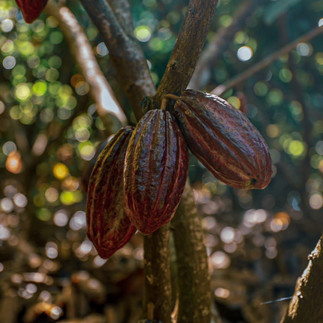Our Gourmet Jury President Emmanuelle de Beauregard went to meet cocoa producers in El Salvador.
- Emmanuelle de Beauregard

- Feb 9
- 2 min read
My trip to El Salvador
The family farms I visited are perfect examples of a quality approach, combining innovative farming practices and careful post-harvest processing, with a constant concern to produce cocoa of the highest quality.
At Finca Chiquihuat, in the home of Herbert, a former doctor turned farmer, I discovered a novel approach to cocoa, which is treated as a veritable medicinal fruit. On his 7 hectares of land, I explored ancestral varieties that bear witness to an exceptional heritage, surrounded by timber trees and numerous fruit species. This plant diversity forms a protective and fertile shade forest, enabling the cocoa trees to thrive.
I also visited Finca La Catarina, which specializes in Trinitarios clones, where I could appreciate the crucial importance of pollination for the quality of the fruit. At Luis' Hacienda Comalapa, the cocoa grows in the heart of the forest, revealing the deep soul of its terroir. The post-harvest treatment is rigorously carried out here, with a 6-day fermentation process, repeated every day, to reveal all the richness of the cocoa.
Finally, Hacienda La Carrera, the country's largest cocoa plantation, fascinated me with its size and expertise. As a biological reserve, it has an on-site quality control laboratory, a guarantee of rigor and passion for the craft.
El Salvador is a country of incomparable human warmth, where the welcome from the producers is as generous as their commitment to cocoa. Learning more about the post-harvest process was a total delight, reinforcing my conviction that it is essential to value the work of the farmers, to support them in their virtuous endeavors, and to ensure that they are fairly remunerated.
The trip was a real source of inspiration, reminding me that every cocoa bean has its history, its terroir, and, above all, its passion.

























































Comments